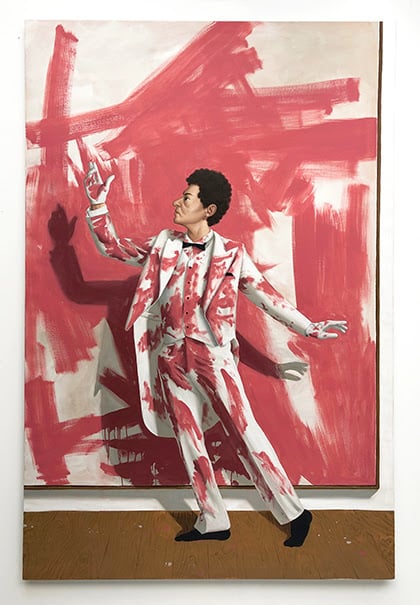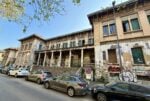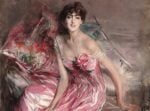Patrizio di Massimo

Mostra personale
Comunicato stampa
KURA. is pleased to present the first solo exhibition in Milan by the Italian artist Patrizio Di Massimo (born in 1983, lives and works in London): a body of new works which further explores on a larger scale many themes dear to the artist.
Patrizio Di Massimo sets up a vocabulary with endless combinations of information and references: from Renaissance painting, through Mannerism and the late nineteenth century French artists, to the icons of contemporary photography, to unidentified images found on the web, to an archive of personal drawings and photographs.
The artist works at an ever-present space-time junction, creating an imaginary world in which if he anachronistically seems to draw on a past tradition, he actually makes an ancient language current, bringing it back to our time, instilling new energy and a new vision into it with images relating to the personal and the universal, to the public and the private.
Images that have the challenging appeal of an advertisement, with their firm tone, vibrant colors, plentiful details, movement, story-telling.
Clad in clever irony and classic elegance, Patrizio Di Massimo’s paintings become paraphrases of a much larger world in which the artist includes friends, family, acquaintances and people close to him. His characters take shape, move, leave the studio and the mind of the artist to confront the real world – no longer a plain representation of themselves, but main actors and presences, the interpreters of their own life and defined identities. Masculine and feminine merge in the artist's practice, and the so-called “gender roles” are constantly redefined, questioned and recoded.
The artist therefore represents himself, his self-portrait, in a multitude of works and in a continuous externalization of himself, aimed at a process of constant identity validation.
The self-portrait that welcomes the viewer, Self-portrait as abstract painter (after Annie Leibovitz), sees the artist ironically mimicking the American actor Steve Martin in front of a work by Franz Kline, a photograph made in 1981 for the cover of Rolling Stone and a pop expression of the cult of personality. A self-portrait as an icon acts as a perfect counterpart to the more intimate representation of the self, no longer in first person but reflected in his daughter’s eyes. Diana (6 months) reciprocates her father’s gaze in wonder, as if in a conversation to find out about each other. Prussian Love and Bauhau continue the “quarrel series” which the artist started in 2018. The dynamics within a couple’s relationships are metaphorically represented by Alan Prada and Fabio Cherstich and by Goshka Macuga and Nabil Bouhir. Two distinct and contrasting environments, a luxurious brocade room and an artist’s studio, act as backdrops for the bodies in their clashing for emotional survival. Another couple, in this case two women, intertwines in the subversion of the typical representation of a medieval theme, the damsel-in-distress saved by the knight. Epico Cavalleresco (After Joseph Paul Blanc) [Knightly Epic (After Joseph Paul Blanc)] updates a scene etched in the patriarchal collective memory, in this case the story of Ruggiero and Angelica as painted by Joseph Paul Blanc in the second half of the nineteenth century. History, in the classical sense, gives way to a plurality of stories told by invented characters, friends and family of the artist’s, in a kaleidoscope of intertwined glances and bodies. In Untitled (Green Triptych), in the background we catch a glimpse of a detail taken from a work by Balthus (The Street, 1933), a controversial artist who explored the border between voyeurism and representation. Di Massimo does not give up either of these practices, being at the same time the main character and the author of the triptych; stripped, in female lingerie, submissive to the pleasure of the other and perhaps of his own, sodomy and masochism meet.
To a vision of the world so rich in angles, imperfections, timbres, and devoid of any possible objectification, Patrizio Di Massimo’s pictorial clarity seems to respond as a magnifying glass capable of looking into the folds of reality and thus becoming the only true and possible key to understanding. It is a painting that amplifies, that highlights, that seems to scrutinize without judgment. The cathartic effect of the gaze impressed on the canvas can only highlight a perfectly imperfect world, which includes desires, feelings and inclinations that the artist cleverly brings to the surface. The representation thus becomes an allegory of contemporary man, a character with a thousand faces à la Pirandello, who similarly to an interpreter is able to play different roles and offer the viewers the possibility of choosing their favorite.
*
KURA.
VIA OSLAVIA, 17
20134 MILAN
C/O FONDERIA ARTISTICA BATTAGLIA
[email protected]
www.k-u-r-a.it
KURA. is a long-term exhibition program conceived and curated by CURA. Initiated in July 2018 in the premises of Fonderia Artistica Battaglia in Milan, KURA. is intended as an independent non-profit project that defines itself over time.
The exhibition anticipates the first monographic book by Patrizio Di Massimo, published by CURA. and to be released in November 2019.
Thanks to the support of ChertLüdde, Berlin and T293, Rome
Opening the same night in Lambrate:
Flavio Favelli – Agfacolor
Galleria Francesca Minini
Image:
Self portrait as abstract painter (after Anne Leibovitz), 2019
Courtesy the artist, ChertLüdde, Berlin and T293 Gallery, Rome



